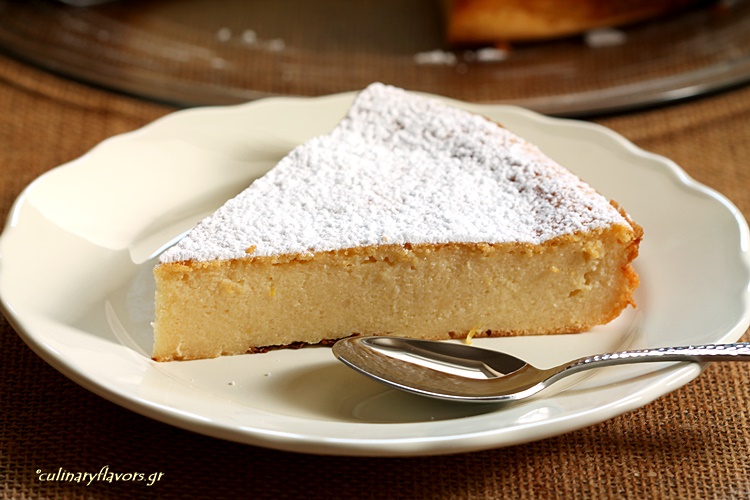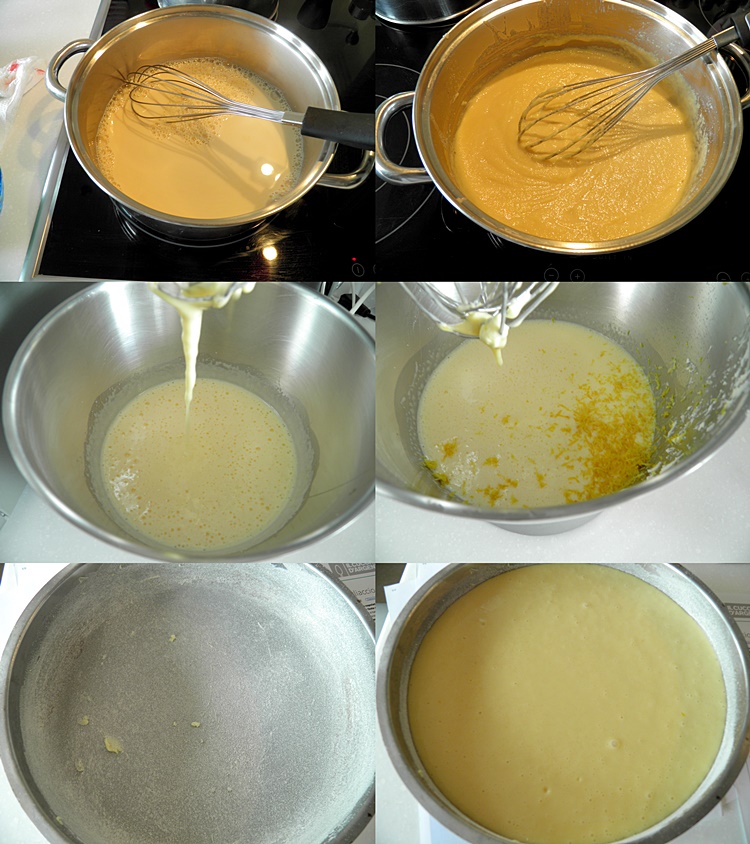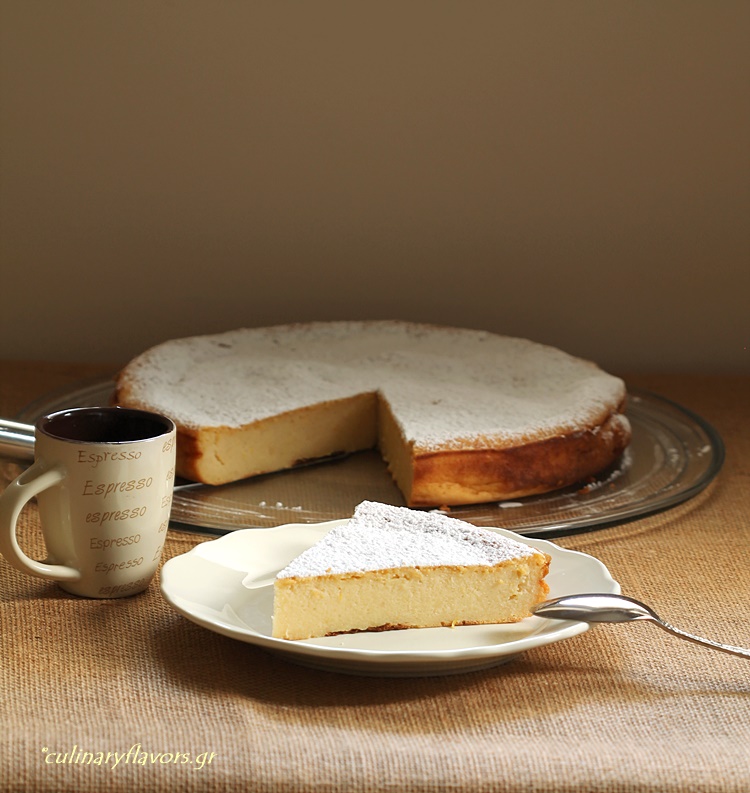Migliaccio is a typical dessert of the Carnival. It is part of the Napoli tradition, but it is consumed in all areas of Campania region in Italy. Its recipe has ancient origins and it seems to date back to the Middle Ages. As often happened, it was invented by some peasant woman who was trying to recycle the leftovers from the day before.
In ancient times, the sweet dessert was prepared with millet bread and pork blood. The name of the cake comes from the Latin “miliaccium” which means millet bread. Today the old ingredients have been replaced by semolina, milk and butter. Its taste is reminiscent of the stuffing of a sfogliatella and in fact in the municipalities of the Valle Caudina, it is called sfogliata, because to the classic version is also added ricotta.
Originally, however, the main ingredient of the mile was pork blood, a very nutritious food useful for farmers to support hard work in the fields. Then the Catholic Church, it seems that pushed to change the original version, considering the blood of the pig something that refers to pagan traditions. So, around 1700 the blood was replaced by sugar, cinnamon, flour and eggs, and the semolina took the place of millet flour. Pursued, someone to make it even better and softer, had to think of the ricotta to give it the consistency of a pastiera without pastry.
The migliaccio, was considered for a long time a sweet plebeian sweet. Over time became the sweet much used among all walks of life. Today, tradition wants it to be prepared and consumed on a fat Thursday. An advice: prepare it the day before, if it rests it is better.
February is the month of Carnival here in Greece. Carnival is that period of time when people are dressed in costumes and wear masks.
Carnival goes back to the ancient years and the worship of Dionysus. Dionysus as is his name in Greek was the god of wine, winemaking grapes, ritual madness and ecstasy in our mythology. He was the last one accepted to join the twelve gods of Mt. Olympus. He was the son of Zeus and the mortal Semele, thus semi-divine.
Dionysus has been depicted in many forms. In some cases, he was shown as a mature man with beard and robe. He was holding a fennel staff, tipped with a pine-cone known as thyrsus. He was followed by wild females called Maenads and bearded satyrs. As Wikipedia says: “Dionysus is represented by city religions as the protector of those who do not belong to conventional society and thus symbolizes everything which is chaotic, dangerous and unexpected, everything which escapes human reason, and which can only be attributed to the unforeseeable action of the gods.”
This dessert is so simple that almost anyone can do it without a mistake. Its taste is so airy and lemony and pairs perfectly with a cup of tea or coffee or hot chocolate. It is light in flavor and indeed when consumed it doesn’t give you the feeling of sugar overwhelm. We all loved it and it is going to be added to our range of favorite sweets.
- 120 gr. / 4 oz. Fine semolina
- 500 ml / 17 oz. milk
- 175 gr. / 6 oz. Ricotta or cream cheese
- 3 eggs
- 150 gr. / 5 oz. Sugar
- Juice of 1 orange
- Zest of 1 lemon
- 30 gr. / 1 oz. Butter
- Caster sugar to dust on top
- Preheat oven to 175°C / 350°F.
- In a deep pot pour milk and add the butter and bring to gentle boil.
- Throw slowly the semolina while stirring constantly.
- When it starts to thicken turn off heat and continue to stir for a minute.
- Remove and set aside.
- In your stand mixer add the sugar and eggs and beat until a pale colored mixture is formed.
- Stir in the ricotta or cream cheese cut in small pieces.
- Beat gently until it is incorporated.
- While the mixer is working add the lemon zest and the orange juice.
- Slowly slowly start pouring the semolina batter while the mixer is on.
- Take a round springform with diameter 22cm / 8 in. butter it and flour it.
- Pour the batter in the springform and bake until a knife comes clean and a nice golden color has formed on top.
- Remove and let cool.
- Loose the sides and place the dessert on a platter.
- Dust caster sugar on top and serve.
- 120 γρ. λεπτό σιμιγδάλι
- 500 ml γάλα
- 175 γρ. ρικότα ή τυρί κρέμα
- 3 αυγά
- 150 γρ. ζάχαρη
- Χυμό από 1 πορτοκάλι
- Ξύσμα από 1 λεμόνι
- 30 γρ. Βούτυρο
- Άχνη ζάχαρη για το πασπάλισμα
- Προθερμαίνετε τον φούρνο στους 175°C.
- Σε μια βαθιά κατσαρόλα ρίχνουμε γάλα και προσθέτουμε το βούτυρο και φέρνουμε σε ήπιο βρασμό.
- Ρίχνουμε αργά το σιμιγδάλι ενώ ανακατεύουμε συνεχώς.
- Όταν αρχίσει να δένει, σβήνουμε τη φωτιά και συνεχίζουμε να ανακατεύουμε για ένα λεπτό.
- Το αφήνουμε στην άκρη.
- Στο μίξερ προσθέτουμε τη ζάχαρη και τα αυγά και χτυπάμε μέχρι να αφρατέψουν και να σχηματιστεί ένα ανοιχτόχρωμο μείγμα.
- Ρίχνουμε τη ρικότα ή το τυρί κρέμας σε μικρά κομμάτια.
- Χτυπάμε απαλά μέχρι να ενσωματωθεί.
- Ενώ το μίξερ λειτουργεί προσθέτουμε το ξύσμα λεμονιού και τον χυμό πορτοκαλιού.
- Αργά αργά να αρχίζουμε να ρίχνουμε το μείγμα του σιμιγδαλιού ενώ το μίξερ είναι σε λειτουργία.
- Βουτυρώνουμε και αλευρώνουμε ένα στρογγυλό ταψί με διάμετρο 22cm .
- Ρίχνουμε το μείγμα στη φόρμα και ψήνουμε μέχρι το μαχαίρι να βγαίνει καθαρό και να σχηματιστεί ένα ωραίο χρυσαφί χρώμα στην κορυφή.
- Αφαιρούμε από τον φούρνο και αφήνουμε να κρυώσει.
- Βάζουμε το επιδόρπιο σε πιατέλα.
- Πασπαλίζουμε με άχνη ζάχαρη από πάνω και σερβίρουμε.




